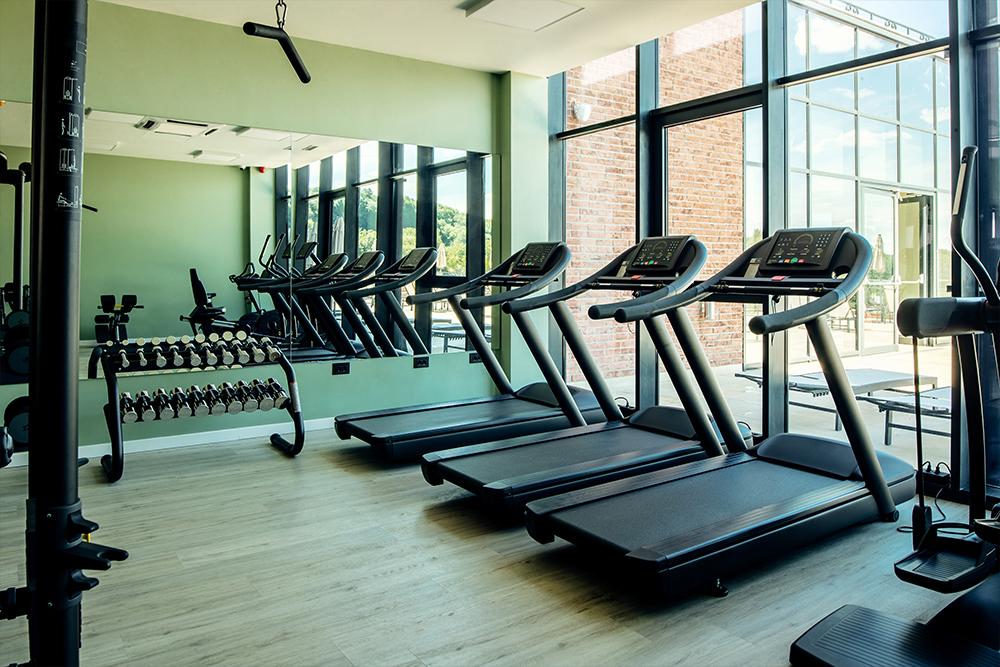- Empty cart.
- Continue Shopping
Manual Treadmills Vs. Motorized Treadmills: Which is Better?

Are you caught in a treadmill dilemma? Torn between the simplicity of a manual treadmill and the convenience of a motorized one? Gotcha!
Choosing the right treadmill can be a daunting task, with a myriad of options and conflicting opinions out there. But fear not! In this article, we’ll delve into the heart of this fitness showdown, comparing which treadmill is better motorized or manual. If you’re ready, let’s get started!
What is a Manual Treadmill?
Manual treadmills don’t have a motorized mechanism to drive the belt forward. Instead, you control the pace of your workout by pushing against the treadmill’s surface with your feet.
A manual treadmill typically consists of a sturdy frame, a non-motorized belt, and handlebars for support and stability. The belt is usually textured or ribbed to provide traction and prevent slipping. Some manual treadmills may also have adjustable incline settings, allowing you to simulate uphill or downhill running.
So, is a manual treadmill better than an electric one? Let’s explore the advantages of motorized treadmills to get a comprehensive comparison.
Advantages of a Manual Treadmill
Manual treadmills offer a few unique benefits and considerations compared to their motorized counterparts:
- Affordability: Manual treadmills offer a notable advantage in terms of affordability, as they are generally more budget-friendly than motorized treadmills. Their simpler design with fewer complex components makes them easier to assemble and use.
- Cushioning and shock absorption: Most motorized treadmills have cushioned decks that provide better shock absorption. The cushioning helps reduce the impact on your joints, making your workouts more comfortable and decreasing the risk of injuries.
- Variable speed and incline options: Motorized treadmills provide the flexibility to change the speed and incline settings during your workout. You can simulate different terrains, increase the intensity, or customize your training based on your fitness level and goals.
- Tracking and progress monitoring: Many motorized treadmills have built-in tracking features that allow you to monitor your workout progress. You can track metrics such as distance, time, speed, calories burned, and even heart rate if the treadmill has sensors or is compatible with wearable devices.
Disadvantages of a Motorized Treadmill
- Manual treadmills have limited workout options as they lack adjustable speed and preset workout programs.
- The pace is solely determined by the user’s effort, making them less versatile for varying intensity or following specific training programs.
- Additionally, the continuous effort required to move the belt on a manual treadmill can strain joints, particularly during extended running or walking sessions.
- The absence of motorized cushioning and shock absorption increases the impact on joints, potentially leading to discomfort and a higher risk of injury.
What is a Motorized Treadmill?
A motorized treadmill, also known as an electric treadmill, is powered by an electric motor that drives the movement of the running belt. These treadmills typically consist of a sturdy frame, a running belt, and a control panel. The motor powers the belt, allowing it to move at various speeds according to your desired settings. The control panel usually includes a display screen and buttons or controls to adjust speed, incline, and other settings.
Advantages of a Motorized Treadmill
- Convenience: Motorized treadmills offer convenient speed and incline adjustment at the touch of a button, allowing for customized workout intensity. Additionally, they often feature pre-set workout programs with challenges and goals for added variety and motivation.
- Cushioning and shock absorption: Most motorized treadmills have cushioned decks that provide better shock absorption. The cushioning helps reduce the impact on your joints, making your workouts more comfortable and decreasing the risk of injuries.
- Variable speed and incline options: Motorized treadmills provide the flexibility to change the speed and incline settings during your workout. You can simulate different terrains, increase the intensity, or customize your training based on your fitness level and goals.
- Tracking and progress monitoring: Many motorized treadmills have built-in tracking features that allow you to monitor your workout progress. You can track metrics such as distance, time, speed, calories burned, and even heart rate if the treadmill has sensors or is compatible with wearable devices.
Disadvantages of a Motorized Treadmill
While motorized treadmills offer numerous benefits for fitness enthusiasts, they also have disadvantages. Here are some of the drawbacks associated with motorized treadmills:
- Motorized treadmills have a higher cost due to the inclusion of a motor, electronic components, and advanced features.
- They require regular maintenance and can generate noise during operation, which may be inconvenient in shared living spaces. The dependency on electricity means they become unusable during power outages.
- Some users find the consistent movement of the treadmill belt unnatural, and it can alter stride mechanics.
- Safety hazards include the risk of tripping and falling, particularly when starting or stopping abruptly, as well as the potential for accidents if fingers, clothing, or objects get caught in the moving belt.
Factors to Consider in Choosing Between Manual and Motorized Treadmills
Both manual and motorized treadmills have advantages and considerations. To help you make an informed decision, let’s explore the key factors to consider when choosing between manual and motorized treadmills.
- Cost: Compare the prices of manual and motorized treadmills to see which fits your budget better. Motorized treadmills tend to be more expensive.
- Maintenance: Motorized treadmills may require regular servicing and occasional repairs, while manual treadmills have fewer components to maintain.
- Space: Evaluate the available space in your home or gym. Motorized treadmills are typically larger, and require more floor space than manual treadmills.
- Features: Motorized treadmills often offer adjustable speed and incline settings, preset workout programs, heart rate monitors, and other advanced features. Manual treadmills usually have fewer features.
- Workout Experience: Motorized treadmills provide a smoother and more controlled running experience, while manual treadmills require more effort from the user.
- Fitness Goals: If you need precise speed and incline adjustments for specific training purposes, a motorized treadmill may be more suitable. However, if you prefer a more challenging and engaging workout, a manual treadmill can provide a higher intensity.
- Power Dependency: Keep in mind that motorized treadmills require access to electricity, while manual treadmills do not, allowing you to use them anywhere.
The choice between manual and motorized treadmills ultimately depends on your specific needs and preferences. Consider your budget, space availability, fitness goals, and desired features to determine which option is better suited for you.


